 April 21, 2016 John E. Ross, KD8IDJ, Editor
| |||||||||
New ARRL CEO Tom Gallagher, NY2RF, Pledges World-Class Service, Openness, Inclusiveness The ARRL's new Chief Executive Officer Tom Gallagher, NY2RF, got down to work on his first day in office on April 18 by promising to make the League's foundational business processes "rock solid" and bring them up to state of the art, which members have a right to expect. Gallagher, who arrived at Headquarters on February 29 as CEO-Elect, has now assumed the top leadership post long held by David Sumner, K1ZZ, who officially retired on April 18. In late January, all 15 ARRL Directors voted to elect Gallagher as CEO and Secretary, and Gallagher said he plans to build upon Sumner's legacy. During weeks of walking the halls and speaking with what he described as "the 95 outstanding employees we have here at Headquarters," Gallagher said he's seen a lot that's positive but acknowledged that some issues need attention.
"My colleagues require the tools to do their jobs efficiently and effectively," he said. "When they don't have them it makes it harder for them to serve our members. We want to keep traffic moving. That will require investment and hard work, but we're going to do it." Gallagher said some resources would be redeployed into areas that need more support, to improve or enhance the League's service. The new CEO pointed to the recent example of more than 1000 issues of QST that were lost in transit to members' mailboxes due to a train derailment. "Within 24 hours, we knew exactly which copies had been destroyed, and the Circulation Department sent out replacement copies via First-Class Mail," he said. "That's the kind of world-class service we want to perpetuate." QST readers soon will see Gallagher's personal stamp on the monthly editorial, which he's renamed "Second Century." While it will be essentially the same format as Sumner's "It Seems to Us" editorial, "the latter belongs to Dave," Gallagher said. "I don't think I could ever replace his erudition and his scholarship, or match his plain speaking, and I'm not going to try." Gallagher also has promised a spirit of openness and inclusiveness to bring the enrichment of Amateur Radio to a wider community. "Greater transparency is my guiding principle, as well as that of ARRL President Rick Roderick, K5UR, and the goals included in the Strategic Plan approved by the ARRL Board of Directors ," he added. Gallagher invited members to take their suggestions and concerns directly to him. Gallagher's assumption of the CEO post coincided with World Amateur Radio Day, which marks the founding of the International Amateur Radio Union (IARU) in 1925. Read more. EchoLink VoIP Service Proving Valuable in Handling Ecuador Earthquake Traffic What you see on the news is only the tip of the iceberg of what really happened as a result of the devastating April 16 earthquake in Ecuador, Michigan physician Rick Dorsch, NE8Z/HC1MD, told ARRL. Since the 7.8 magnitude quake hit while most people were at home finishing dinner, "thousands of people" remain buried in the rubble of collapsed buildings, he said, although some have been found alive. Dorsch and his wife Maria, HC1MM, also a physician, have been helping to handle health-and-welfare traffic via EchoLink, which is connected to the Ecuadorean interlaced national 2 meter repeater network.
"EchoLink is actually a fantastic Amateur Radio service," Dorsch told ARRL. "It has become extremely useful for the hams there to reach out to the outside world via 2 meters." (Other reports have indicated that some EchoLink nodes have been shut down to save power.) HF also is playing a role, and radio amateurs have been asked to give 7.060 MHz (LSB) a wide berth while the Cadena HC Net handles emergency traffic. Dorsch said some problems have cropped up from DX pileups that have overlapped the net's frequency. Dorsch pointed out that while most of the damage was in the HC4 areas of Manabí and Esmeraldas provinces and the HC2 area of Guayas Province, what's not seen from the outside is the heavy damage to surrounding small fishing villages and colonial towns that were leveled. Fortunately the Portoviejo Radio Club was undamaged, and members have been operating from there. Dorsch said that electrical power is starting to return, and the cellular network is still "iffy," but the Quito Radio Club is providing battery-powered cellphone charging stations. A lot of health-and-welfare traffic is headed not only between Ecuador and the US but to Spain, Chile, and elsewhere, he reported. Dorsch said more bilingual Spanish-English speakers are needed on the HC1BG-R EchoLink channel. While power has been knocked out over much of the affected region, Dorsch said, he's witnessing hams all over Ecuador operating from mobile stations, portable stations, and, in some cases, from home. "All of the Ecuadorean radio clubs have been on high alert and are helping in search-and-rescue efforts," he said. "Ham radio at its best!"
On a more positive note, Dorsch said that noted DXer Lilian "Mami" de Ayala, HC4L, barely escaped death or serious injury when her home collapsed. The 85-year-old, who lives in Portoviejo, was in her radio room seconds before the earthquake hit. "Her granddaughter had come over to visit, so Lilian went into another part of the house," Dorsch said. Her radio room and home were destroyed, and her next-door neighbor was among the casualties. "She's still in shock and can't believe she's alive," Dorsch told ARRL. Local hams have removed her personal effects and ham radio gear to a safe location. For more than 40 years, de Ayala had been a regular check-in on the Cadena HC Net on 40 meters. "It's ironic that the one person who lost all of her radio equipment was the one who organized radio emergency services for so many years," Dorsch said. Her tower and antennas survived, because they were mounted on the roof of her son's home next door. -- Thanks also to Ramón Santoyo, XE1KK, IARU Region 2 Vice President You Have an Appointment with the Doctor! A new episode of "ARRL The Doctor is In" podcast is available now: Does CW Really Get Through When Nothing Else Can?
Every 2 weeks your host, QST Editor in Chief Steve Ford, WB8IMY, and the Doctor himself, Joel Hallas, W1ZR, will discuss a broad range of technical topics. You can also e-mail your questions to doctor@arrl.org, and they may answer them in a future podcast. Enjoy "ARRL The Doctor is In" on Apple iTunes, or by using your iPhone or iPad podcast app (just search for ARRL The Doctor is In). You can also listen online at Blubrry, or at Stitcher (free registration required, or browse the site as a guest) and through the free Stitcher app for iOS, Kindle, or Android devices.
If you've never listened to a podcast before, download our beginner's guide. National Parks on the Air Update National Parks Week is April 16-24, and NPOTA activity is through the roof! Saturday, April 23, offers two events: International Marconi Day (IMD) and the National Park Service's "Instameet" on the social media site The ARRL is looking for high-quality photos and video of NPOTA activators in the field for display at the Dayton Hamvention® NPOTA booth! Photos and video should be high-resolution and tell a story that includes both ham radio and details about the park unit. E-mail us, if you have material to share. There will be 42 activations on the air April 21-27, including Tonto National Monument (MN70) in Arizona, and Colonial National Historic Park (HP09) in Virginia. Details about these and other upcoming activations can be found on the NPOTA Activations calendar. Keep up with the latest NPOTA news on Facebook. Follow NPOTA on Twitter (@ARRL_NPOTA). Amateur Radio Praised Following Participation in Washington Interoperability Exercise Amateur Radio came in for high praise following its role in a March 30 to April 3 Washington National Guard interoperability communication exercise, sponsored by the US Northern Command. The so-called "Vital Connection-Cascadia 2016" exercise was aimed at improving interoperability among Department of Defense entities, federal, state, and local first responders, and Amateur Radio operators. Interoperability was tested on 5 MHz frequencies. The spring drill was a run-up to June's "Cascadia Rising/Vigilant Guard/Ardent Sentry" exercise. It included voice and data radio and satellite communication plus video integration from airborne assets.
Lt Col Lawrence Hager of the Washington Air National Guard also had kind words for Amateur Radio. "I would like to thank everyone who participated in the Vital Connection-Cascadia [communications exercise]," he said. "We had many successes, such as HF radio interoperability between military, government, and civilian sectors on the 60 meter (5 MHz) band." Hager is an Air Force officer responsible to The Adjutant General (TAG) for communications in both the Army Guard and Air Force Guard. "It was truly a pleasure exercising with you folks," allowed State RACES Officer Ed Leavitt, K7EFL, in a message to the Washington National Guard. "Thanks for inviting us." Regarding the use of the 60 meter channels as a conduit for outreach to civilian entities, Leavitt said, "While I am hesitant to use phrases like 'This has never been done before,' I suspect that may actually be the case." ARRL Western Washington ARRL Section Manager Monte Simpson, K2MLS, who is also Washington State RACES Officer, said the feedback he's received regarding Amateur Radio participation has been positive. "The 60 meter band proved to be excellent," he said. "While at the State EOC I had the occasion to hear a 60 meter conversation that was crystal clear with nearly no noise. The Mason County Emergency Coordinator/RACES Officer reported that he had used Fldigi to communicate with the National Guard. The Washington State Guard provided soldiers who are Amateur Radio operators as the ham radio connection to the National Guard." US ARDF Champions Now Looking Toward September World Championships in Bulgaria The results of the United States 16th national championships of Amateur Radio Direction Finding (ARDF), held earlier this month in Central Texas, are now in the record books. Stateside winners of these championships, as well as medalists from the 2015 championships in Colorado, are being considered for ARDF Team USA, which will travel to Albena, Bulgaria, for the 18th ARDF World Championships in September.
Moell said ARDF fans came to Texas from all over the US to see who was best at finding radio transmitters hidden in the woods. An optional training day kicked things off on April 6. The next day was devoted to foxoring, a combination of radio direction finding and classic orienteering on 80 meters. Friday, April 8, was the formal 80 meter sprint event. Classic 2 meter and 80 meter competitions took place Saturday and Sunday, respectively. Category winners of gold medals were (in alphabetical order): Vadim Afonkin, KB1RLI (M40 2 meters, 80 meters); Dick Arnett, WB4SUV (M70 2 meters); Natalia Bondarenco (W35 sprint); Ruth Bromer, WB4QZG (W60 2 meters, sprint, foxor); Bob Cooley, KF6VSE (M70 80 meters, sprint, foxor); Joseph Huberman, K5JGH (M60 2 meters, sprint, foxor); Lori Huberman (W21 2 meters, 80 meters, sprint, foxor); Dale Hunt, WB6BYU (M60 80 meters); Illia Ivanko (M21 2 meters, 80 meters); Iurii Kolesnykov (M50 foxor); Karla Leach, KC7BLA (W60 80 meters); Norbert Linke (M21 sprint, foxor); Nicolai
Mejevoi (M50 2 meters, 80 meters, sprint); Alla Mezhevaya (W35 2 meters, 80 meters, foxor); Patrick Sears, AK4JE (M40 foxor); Evghenii Vorsin (M40 sprint), and Zhonghao Xu (M19 sprint). Lead organizers, hosts, and course planners for the event were Jennifer and Kenneth Harker, W5JEN and WM5R, both veteran ARDF competitors and medalists. Members of the Austin Orienteering Club assisted. The International Amateur Radio Union (IARU) sets ARDF championship rules. Participants are divided into 11 age/gender categories. Contact Moell for more information on ARDF and on attending or participating in the World Championships this September in Bulgaria. Moell stressed that ARDF participants do not need an Amateur Radio license. Visit Moell's Homing In website for additional information on ARDF. On-the-Air Activity to Highlight International Marconi Day on April 23 Around-the-world Amateur Radio activity will mark the 29th annual International Marconi Day (IMD), a 24-hour event held annually to celebrate the anniversary of wireless pioneer Guglielmo Marconi's birth on April 25, 1874. IMD is observed each year on a Saturday close to Marconi's birthday, and this year it will be observed on Saturday, April 23, with many special event stations on the air -- some operating from Marconi-related sites that count as points toward the Marconi Award. Certificates are available for both transmitting stations and shortwave listeners (SWLs).
The event is not a contest; it is an opportunity for amateurs around the world to make point-to-point contact with historic Marconi sites on HF, and to earn an award certificate for working or hearing a requisite number of Marconi stations. International Marconi Day special event station GB4IMD will operate from Cornwall, helmed by members of the Cornish Amateur Radio Club, which organizes the IMD event each year. IMD 2016 has been dedicated to Norman Pascoe, G4USB (SK), one of the event's founders, who died in February. Cornwall was home to some of Marconi's early work. GK3MPD will be on the air from the inventor's Poldhu site. The Kerry Amateur Radio Group in Ireland will be among those taking part as an Award Station in this year's IMD activities. The station will be set up on the site of the former Marconi Station at Ballybunnion by the "Expeditionary Radio Team" of the radio club. Two HF stations are planned, and special event call sign EI6YXQ will commemorate the original YXQ that the Marconi Station at Ballybunnion used.
Radio amateurs in Norfolk, England, will once again be active from Caister Lifeboat as part of the International Marconi Day celebrations. The Norfolk Amateur Radio Club (NARC) will be on the air from special event station GB0CMS from the Caister Lifeboat Visitor Centre to commemorate the village's original Marconi wireless station, established in 1900. The station's initial purpose was to communicate with ships in the North Sea and the Cross Sands lightship. While it's not part of the official International Marconi Day activities, an Amateur Radio on the International Space Station (ARISS) school contact in England will take place on April 23, and the Marconi observance prompted the proposed initial question to ISS crew member Tim Peake, KG5BVI. Twelve-year-old Benny plans to ask, "Today is International Marconi Day; how do you think Marconi would feel about this radio communication?" Other IMD sites with historical links to the inventor's work include Cape Cod, Massachusetts (WA1WCC); Glace Bay, Nova Scotia (VE1IMD); Villa Griffone, Bologna, Italy (IY4FGM); Signal Hill, St Johns, Newfoundland (VO1AA), and many others. A Facebook page is also available. The "Other" Heard Island DXpedition -- VK0LD The recently ended Heard Island VK0EK DXpedition logged more than 75,000 contacts, but the brief, under-the-radar, contemporaneous VK0LD operation also put a new one into a few more logs. VK0EK logistics team member Mike Coffey, KJ4Z, operated as VK0LD from California, remotely controlling one of the VK0EK Elecraft K3S operating positions. He used a K3/0-Mini and the free RemoteHams.com RCForb client and remote server software to work 41 stations on 20 meters.
"More than a year before the Braveheart set sail, I knew I wanted to try to operate a remote ham radio station from Heard Island during the VK0EK DXpedition," Coffey said. "Co-organizers Bob Schmieder, KK6EK, and Rich Holoch, KY6R, were enthusiastic and gave me the green light." From Tennessee, Coffey, who was off the air from 2003 until 2014, is once again active from California, and, he said on his QRZ.com profile, "eager to make up for lost time." Lacking the expertise to set up and configure the equipment and connection for the remote operation, Coffey approached Elecraft, which supplied the K3S transceivers for VK0EK. Eric Swartz, WA6HHQ, and Brandon Hansen, KG6YPI, introduced him to the Elecraft K3/0-Mini remote control panel -- basically a K3 front panel sans radio -- combined with Hansen's RemoteHams.com software. Leading up to the DXpedition he conducted tests from Elecraft to verify that operation with a satellite connection and the Remote Hams RCForb client software was possible.
On April 4, VK0LD transmitted its first CQ from Heard Island on 20 meter CW, with Coffey at the helm from his home in Palo Alto. "Over the course of the next 50 minutes, VK0LD logged 41 QSOs across Asia and then Europe as the band began to open up," he recounted. Alan Cheshire, VK6CQ, is the licensee of VK0LD. On DX Summit, one Australian station declared VK0LD to be a pirate. "NOT a pirate!" KY6R posted in response. "Finally, control was handed back over to regular VK0EK operations," Coffey said. "But for 50 minutes, I was having the amazing, incredible experience of working a pileup from a Top 10 DXCC entity on the other side of the world." Coffey said the K3/0 setup made it "almost like being there." "I was sorry to stop," he said. "I would have happily worked the pileup for hours." -- Thanks to Elecraft via Eric Swartz, WA6HHQ In Brief...
The K7RA Solar Update Tad Cook, K7RA, Seattle, reports: Over the reporting week April 14-20, average daily sunspot numbers rose from 32 to 40, while average daily solar flux declined from 106.1 to 100.8. Average daily planetary A index declined from 12.4 to 10.9, but average daily mid-latitude A index rose slightly from 8.3 to 8.9.
The Wednesday, April 20, prediction has solar flux values at 85 on April 21-27; 95 on April 28-May 2, except 98 on April 30; 100 on May 3-5; 95 on May 6; 98 on May 7-12; 92 on May 13-14; 102 on May 15-16; 95 on May 17-18; 97 on May 19-20, and 95 on May 21-26. Predicted planetary A index is 5 on April 21-22; 12 on April 23-24; 10 on April 25-26; then 8, 5, 20, 15, and 8 on April 27-May 1; 5 on May 2-3; 12 on May 4; 5 on May 5-8; then 18, 25, 20, 8, and 5 on May 9-13; 12 on May 14-16; 8 on May 17; 5 on May 18-19; 10 and 12 on May 20-21, and 10 on May 22-23. The planetary A index then rises to 20 on May 26 and slips back to 5 for 6 of the 7 days ending the 45-day forecast period. Sunspot numbers for April 14 through 20 were 45, 69, 51, 35, 28, 28, and 24, with a mean of 40. The 10.7 centimeter flux was 111.1, 112.4, 113.2, 102.1, 94.6, 89.1, and 83.2, with a mean of 100.8. Estimated planetary A indices were 23, 9, 12, 19, 5, 3, and 5, with a mean of 10.9. Estimated mid-latitude A indices were 14, 9, 8, 17, 7, 3, and 4, with a mean of 8.9. Send me your reports and observations.
. . . . . .
This Week in Radiosport
See the ARRL Contest Calendar for more information. For in-depth reporting on Amateur Radio contesting, subscribe to The ARRL Contest Update via your ARRL member profile e-mail preferences. Upcoming ARRL Section, State, and Division Conventions and Events
Find conventions and hamfests in your area.
. .
Subscribe to...
Free of charge to ARRL members...
| |||||||||


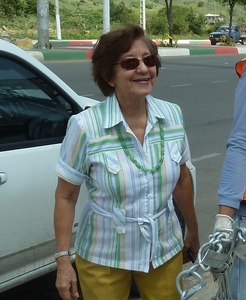
.jpg) Sponsored by
Sponsored by 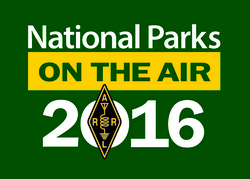 Instagram. People will be posting photos of themselves as they enjoy being in an NPS unit, using the hash tag #FindYourParkInstameet. If you're an Amateur Radio operator and on Instagram, April 23 will be a great day to get some visibility for NPOTA on social media.
Instagram. People will be posting photos of themselves as they enjoy being in an NPS unit, using the hash tag #FindYourParkInstameet. If you're an Amateur Radio operator and on Instagram, April 23 will be a great day to get some visibility for NPOTA on social media.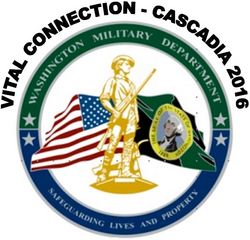 "The largest success of this exercise by far was the use of the 60 meter HF interoperability bands to successfully pass voice and data traffic between military and civilian entities," the After Action Report said. "There was great integration among military units from Washington and other states, Army and Air Force MARS, Washington State Guard, state and county EOCs, and the ARES and RACES Amateur Radio communities."
"The largest success of this exercise by far was the use of the 60 meter HF interoperability bands to successfully pass voice and data traffic between military and civilian entities," the After Action Report said. "There was great integration among military units from Washington and other states, Army and Air Force MARS, Washington State Guard, state and county EOCs, and the ARES and RACES Amateur Radio communities."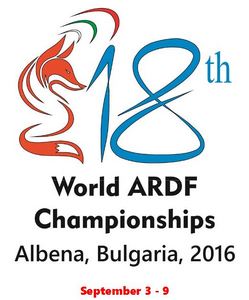 "The categories for men between over age 40 and women over age 60 already have a full slate of team candidates," ARRL ARDF Coordinator Joe Moell, K0OV, said, adding that "uncontested openings" on Team USA exist for younger men and women. A maximum of three competitors in each age/gender category may be on a nation's team.
"The categories for men between over age 40 and women over age 60 already have a full slate of team candidates," ARRL ARDF Coordinator Joe Moell, K0OV, said, adding that "uncontested openings" on Team USA exist for younger men and women. A maximum of three competitors in each age/gender category may be on a nation's team.
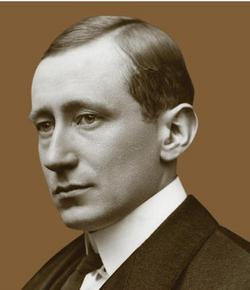
%20from%20G0ODR%20with%20daughter%202E0OCL.jpg)
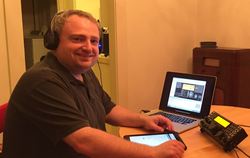

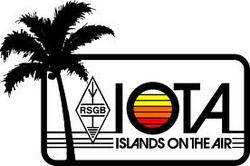 Islands on the Air (IOTA) Management Shifts to Not-For-Profit Company: Following agreement with the Radio Society of Great Britain (
Islands on the Air (IOTA) Management Shifts to Not-For-Profit Company: Following agreement with the Radio Society of Great Britain (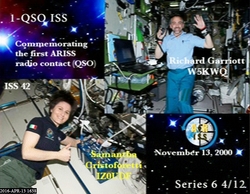 Commemorative ARISS Slow-Scan TV Transmissions a Success: The recent commemorative Amateur Radio on the International Space Station (
Commemorative ARISS Slow-Scan TV Transmissions a Success: The recent commemorative Amateur Radio on the International Space Station ( Brazil Eases Authorization for Radio Amateurs Attending the 2016 Summer Olympics: IARU Region 2 News Editor Joaquín Solana, XE1R, reports that radio amateurs hoping to operate in Brazil during the
Brazil Eases Authorization for Radio Amateurs Attending the 2016 Summer Olympics: IARU Region 2 News Editor Joaquín Solana, XE1R, reports that radio amateurs hoping to operate in Brazil during the .jpg) New AO-85 Distance Record Claimed: A new distance record of 5751 kilometers (3565.6 miles) has been claimed for an
New AO-85 Distance Record Claimed: A new distance record of 5751 kilometers (3565.6 miles) has been claimed for an 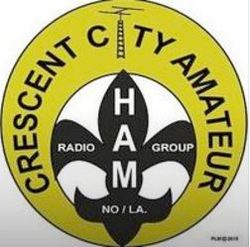 New Orleans Ham Radio & Computer Flea Market Cancelled: The New Orleans Ham Radio & Computer Flea Market scheduled for May 7 has been cancelled, its sponsor, the Crescent City Amateur Radio Group, has announced.
New Orleans Ham Radio & Computer Flea Market Cancelled: The New Orleans Ham Radio & Computer Flea Market scheduled for May 7 has been cancelled, its sponsor, the Crescent City Amateur Radio Group, has announced.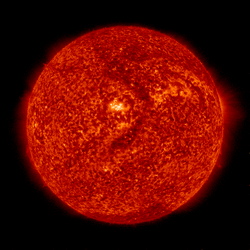 We continue to see weak sunspot groups. There were new ones on April 13, April 16, and April 20.
We continue to see weak sunspot groups. There were new ones on April 13, April 16, and April 20.








